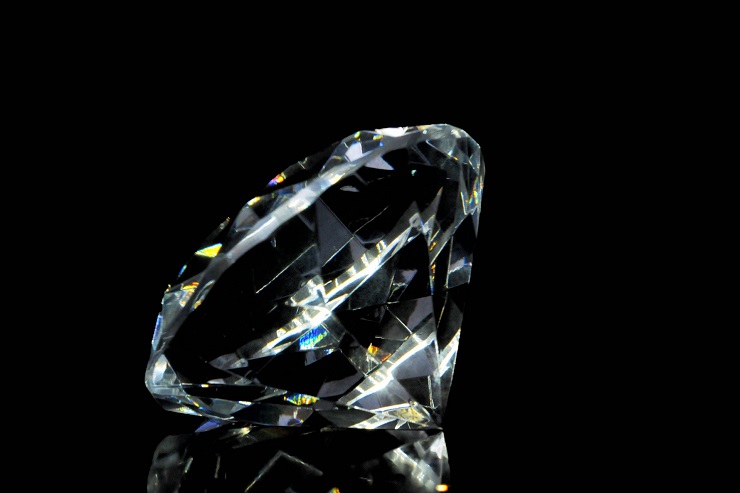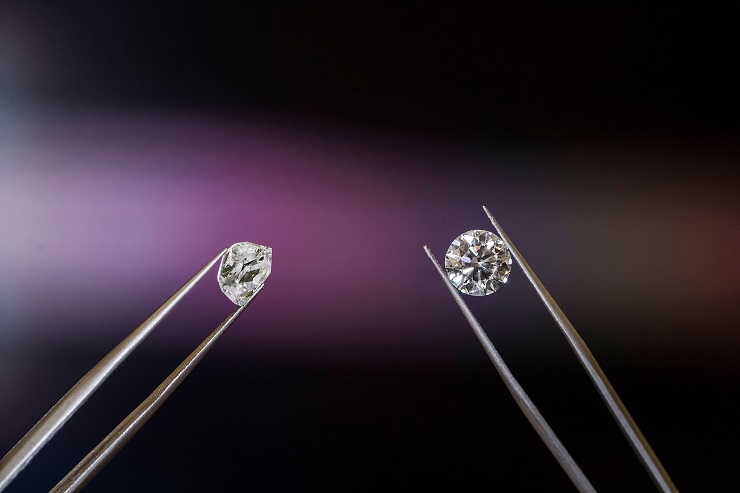
This article has been written by the professional team at Inter-Pacific – a manufacturer of lab-grown gemstones, and is posted on this website as the result of paid collaboration between Hong Kon Madame and Inter-Pacific
You may have figured out that lab-grown diamonds are the most eco-friendly, ethical, and affordable kind of diamonds to purchase for all their high quality. But how are these beautiful gemstones made?
In this article, we will explore what lab-grown diamonds are, the production procedure, and how they compare with natural diamonds.
What is a Lab-Grown Diamond?
A lab-grown diamond, just as the name implies, is a diamond grown or manufactured in a lab. Note that lab-grown diamonds do not mean the same thing as synthesized diamonds. A lab-grown diamond is made from the same raw materials and environmental conditions that produce natural diamonds, except that the location is different.
On the other hand, a synthesized diamond uses different materials that would mimic the properties of a real diamond.
Lab-grown diamonds did not become popular until the 21st century, when the need for eco-friendly and ethically-sourced diamonds became paramount. Their production overrides the extensive mining processes associated with natural diamonds. Also, it beats formation time by a huge difference.
Lab-Grown Diamonds vs Natural Diamond
If you are asking what is the difference between natural and lab-grown diamonds, we’d say none, except for where they are sourced from, the manufacturing process, and the cost, of course, seeing as lab-grown diamonds are way cheaper than natural ones. Lab-grown diamonds possess the same physical, chemical, and optical characteristics as mined diamonds.
The characteristics of a real diamond are:
You may have figured out that lab-grown diamonds are the most eco-friendly, ethical, and affordable kind of diamonds to purchase for all their high quality. But how are these beautiful gemstones made?
In this article, we will explore what lab-grown diamonds are, the production procedure, and how they compare with natural diamonds.
What is a Lab-Grown Diamond?
A lab-grown diamond, just as the name implies, is a diamond grown or manufactured in a lab. Note that lab-grown diamonds do not mean the same thing as synthesized diamonds. A lab-grown diamond is made from the same raw materials and environmental conditions that produce natural diamonds, except that the location is different.
On the other hand, a synthesized diamond uses different materials that would mimic the properties of a real diamond.
Lab-grown diamonds did not become popular until the 21st century, when the need for eco-friendly and ethically-sourced diamonds became paramount. Their production overrides the extensive mining processes associated with natural diamonds. Also, it beats formation time by a huge difference.
Lab-Grown Diamonds vs Natural Diamond
If you are asking what is the difference between natural and lab-grown diamonds, we’d say none, except for where they are sourced from, the manufacturing process, and the cost, of course, seeing as lab-grown diamonds are way cheaper than natural ones. Lab-grown diamonds possess the same physical, chemical, and optical characteristics as mined diamonds.
The characteristics of a real diamond are:
A Mohs scale hardness of 10
A refractive index of 2.42
A light dispersion of 0.044
An electron density of 3.52
A cubic crystal structural formation
Lab-grown diamonds possess all of these characteristics, just as natural diamonds. As a finished product, the clarity, lustre, and hardness remain the same. Unless examined by a professional gem scientist, it is hard to tell how a real diamond was sourced by the naked eye.
Unlike natural diamonds that are prone to flaws with large sizes, diamond lovers can take a chance of large cut and carat size on lab-grown alternatives. Because they are manufactured under prime conditions, there are few chances that a flaw, speck, or crack would occur in a lab-grown diamond, even with large size.

How Long Does It Take to Create Lab-Grown Diamond?
As newer methods of effectively producing lab-grown diamonds are being discovered, they are taking lesser time to manufacture. Superior quality lab-grown diamonds can be grown within two to six weeks, depending on the production method and carat size.
On the other hand, mined diamonds take far much longer time to form completely. Also, when diamonds form within the earth's crust, there are natural pauses that could last for hundreds or millions of years until pressure and temperature conditions become favourable again. In all, it could take millions to billions of years for natural diamonds to form.
Formation of Lab-Grown Diamonds
The creation of lab-grown diamonds mimics a rigorous process similar to how natural diamonds form in the soil. However, the lab-growing process has been hastened. It does not include the natural pauses that occur within the earth's crust. Nevertheless, scientists ensure that all other necessary conditions, such as extremely high temperature and pressure, are available for lab-grown diamonds to form.
In the laboratory, diamonds can be produced using two distinct methods:
High Pressure, High Temperature (HPHT)
HPHT diamonds are manufactured in the lab by mimicking the high pressure and temperature conditions that help form natural diamonds. Once the needed pressure and temperature conditions are available, pure carbon would melt and later crystallize to form diamond.
Chemical Vapour Deposition (CVD)
CVD is a mechanism almost similar to 3D printing. The process begins by having HPHT diamond seeds placed inside a sealed chamber. The chamber is also filled with carbon-rich gases. When high heat of up to 800°C is applied, the carbon-rich gases break down. Pure sediments of carbon form around the initial diamond seed and crystallize to create a bigger diamond.
Both production mechanisms use sophisticated machinery to generate the needed environmental conditions. After the diamonds are manufactured, they undergo similar grading and certification as natural diamonds. After all, they are also real diamonds.
Conclusion
Lab-grown diamonds are produced using processes very similar to that occurring in the earth's crust. However, the process occurs over a very short time and produces diamonds that are rarely flawed.
Lab-grown diamonds are desired because the manufacturing process is sustainable, ethical, eco-friendly and less expensive. Notably, they are also classified as real diamonds as they possess all the physical and chemical characteristics of mined diamonds.
As newer methods of effectively producing lab-grown diamonds are being discovered, they are taking lesser time to manufacture. Superior quality lab-grown diamonds can be grown within two to six weeks, depending on the production method and carat size.
On the other hand, mined diamonds take far much longer time to form completely. Also, when diamonds form within the earth's crust, there are natural pauses that could last for hundreds or millions of years until pressure and temperature conditions become favourable again. In all, it could take millions to billions of years for natural diamonds to form.
Formation of Lab-Grown Diamonds
The creation of lab-grown diamonds mimics a rigorous process similar to how natural diamonds form in the soil. However, the lab-growing process has been hastened. It does not include the natural pauses that occur within the earth's crust. Nevertheless, scientists ensure that all other necessary conditions, such as extremely high temperature and pressure, are available for lab-grown diamonds to form.
In the laboratory, diamonds can be produced using two distinct methods:
High Pressure, High Temperature (HPHT)
HPHT diamonds are manufactured in the lab by mimicking the high pressure and temperature conditions that help form natural diamonds. Once the needed pressure and temperature conditions are available, pure carbon would melt and later crystallize to form diamond.
Chemical Vapour Deposition (CVD)
CVD is a mechanism almost similar to 3D printing. The process begins by having HPHT diamond seeds placed inside a sealed chamber. The chamber is also filled with carbon-rich gases. When high heat of up to 800°C is applied, the carbon-rich gases break down. Pure sediments of carbon form around the initial diamond seed and crystallize to create a bigger diamond.
Both production mechanisms use sophisticated machinery to generate the needed environmental conditions. After the diamonds are manufactured, they undergo similar grading and certification as natural diamonds. After all, they are also real diamonds.
Conclusion
Lab-grown diamonds are produced using processes very similar to that occurring in the earth's crust. However, the process occurs over a very short time and produces diamonds that are rarely flawed.
Lab-grown diamonds are desired because the manufacturing process is sustainable, ethical, eco-friendly and less expensive. Notably, they are also classified as real diamonds as they possess all the physical and chemical characteristics of mined diamonds.






